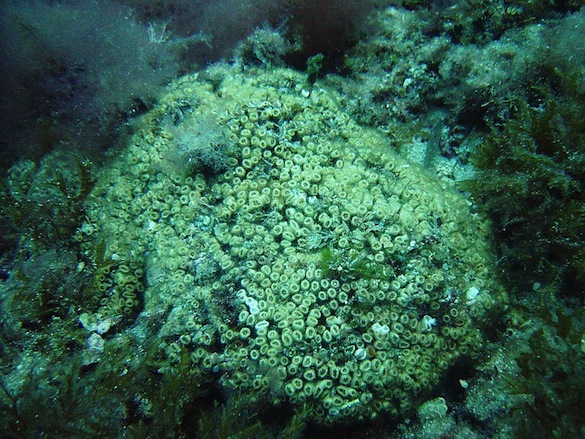SAN FRANCISCO, CA – The Fall Meeting of the American Geophysical Union is once again taking place the festive city of San Francisco. Mild weather and sunny skies have greeted the 22,000+ geoscientists who have traveled from across the globe to participate in the meeting. Among the crowd are many Wooster geologists. Alumni Nicolas Young, Lauren Vargo, and Katharine Schleich joined Dr. Wiles and me for an informal alumni lunch.

Lily Christman (left) caught up with us in the afternoon at the Wooster IS poster. I introduced them to another former student of mine, Alex Lloyd (right), who was a student at Dickinson College when I taught there in a visiting position. Pictured in the center are Lauren Vargo (center right) and me (center left).
The conference isn’t just about networking and reconnecting with old friends. We’re primarily here to contribute to the dialogue of our scientific disciplines. On behalf of the department, I presented a poster in an education session about best practices in the I.S. program (thanks to all of those who stopped by!). Alex Hiatt (’14) and Mary Reinthal (’16) will be presenting their work on subglacial volcanics on Thursday.

Dr. Greg Wiles presented the work that he and his collaborators have been doing in Russia. They are constructing tree-ring records to understand decadal variability in climate.
For those of you wishing you were here, or are at the conference but can’t catch all of the exciting talks and posters, here are some other highlights that you might find interesting:
- 3-D Fossils: The British Geological Survey has 3-D images and scans of fossils. If you have a 3-D printer, you can download the scan files and print a fossil for yourself! (How cool is that? I’m thinking Dr. Mark Wilson will have a need for our newly acquired 3-D printer soon).
- A New Lava Flow Simulation: There’s a new simulation of lava flow emplacement that better reproduces the features characteristic of inflated pahoehoe flows. Check out the paper by Glaze and Baloga (2013), JVGR, 255, 108-123.
- Comprehensive Field Camp: The Southern Illinois University field camp exposes students to four tectonic settings. With sites in Grand Teton National Park, yellowstone, and Craters of the Moon National Monument, who wouldn’t want to do field camp with SIU?
- Volcanic Hazards in California: The USGS has released a digital compilation of the volcanic vents and associated hazards in California. The digital database contains ArcGIS files ready for download.
- Games for Teaching: Programmers are teaming up with geoscientists to create interactive games and simulations to teach everything from hazards to conservation. Naranpur Online, for example, is a socio-economic role-playing game informed by the science of hydrology that could be useful for connecting courses across disciplines.



























